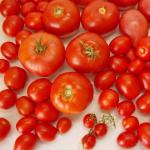Crocheted coats and cardigans are a great way to show off your good taste and creativity. They are perfect for changeable weather in the off-season, when it is completely unclear whether it will be rain, sun, wind or all at once during the day.
Types of cardigans
Almost every knitter, regardless of experience and existing skills, will be able to knit. Schemes and descriptions of many models are offered in abundance on the pages of traditional and online publications.
There are several main types of cardigans:
- Classical.
- Based on a circular canvas.
- From a rectangle stitched in a special way.
All these models can be made from almost any yarn and using a variety of patterns. Of course, denser fabrics should be used to make warm products, and openwork patterns will come in handy to crochet a light cardigan. Schemes and descriptions of those and other patterns will follow below.
What do you need to know before getting started?
When taking on the manufacture of a cardigan, coat or jacket, one should take into account their specifics. When working with solid patterns, you need to make the most accurate pattern. This is especially important for classic models, which include a fitted silhouette, sleeves and a round armhole. Such canvases practically do not stretch, and it is not necessary to count on the fact that a cardigan is brought. In case of a mistake, the sleeve will remain short, and the uneven edge of the part will remain so even after several washes.

the only effective way to influence the shape of a dense web can be called steaming with a steam iron. However, this method should not be abused, since after such processing the parts become soft and slightly “flattened”.
It is much more convenient to work with openwork fabrics and models with a free cut. Wide folded canvases do not require complex and lengthy knitting of reliefs. Sometimes even a pattern is not needed.
Thick thread cardigan
The photo below shows a product knitted with the simplest pattern (single crochet and double crochet) from very

The use of this combination of materials and techniques allows you to crochet a cardigan very quickly and efficiently. Schemes and description for such a model may be required only for beginners, because the cut is extremely simple. Its peculiarity is that the cardigan is not knitted from the bottom up, but with a single piece of fabric, across: from one sleeve to another.
Work begins from the bottom edge of one of the sleeves. The cuff is made with a very popular pattern with embossed columns. They are knitted in the same way as ordinary double crochet stitches, but when forming a new crochet, the hook should not be wound under the loops of the previous row, but under the stitch itself. The effect of an elastic band is achieved by alternating relief columns, connected before work (facial) and those that are called purl (at work).
After knitting the cuffs, they move on to making the sleeves. This is an elementary rectangle. By the way, all the details of such a cardigan have a rectangular shape.
When the length of the sleeve is sufficient, it's time to move on to the formation of the details of the front and back. They are knitted at the same time. To do this, additional air loops are collected on both sides of the upper part of the sleeve and the fabrics of the front and back are knitted.
To form two detachable shelves, you need to do the following:
- When the height of a large canvas becomes equal to the width of one shelf, knitting should be continued only on the part that will be the back.
- Partial extension of the canvas must be performed until this fragment is 15-17 cm. This standard width necks.
- Then you should dial as many air loops as you need to knit the second shelf.
- Carry out further work, referring to the first half of the cardigan.
Crochet openwork cardigan
For knitting summer and spring products, the patterns shown in the following diagrams are suitable.

However, care must be taken to ensure that the canvas is not too soft, otherwise it will inevitably stretch.
Using this pattern, you can make the simplest crochet cardigan. Schemes and description follow below.

The basis of such a product is a very large square or rectangle. You can start knitting from the bottom edge or from the side, it does not really matter. After the canvas is ready, its ends should be sewn to half. The remaining holes will be the armholes of the sleeves.
The final stage is the implementation of the strapping in circular rows. This makes it easy to crochet jackets and cardigans. Diagrams and descriptions for more complex patterns can be found quite quickly in various knitting manuals.
A cardigan is a kind of sweater (from which it originated), without a collar, with a cutout, in a figure. The original essence of a knitted cardigan is the warming of clothes in the cold season. Usually a cardigan is worn under outerwear.
The cardigan is crocheted or knitted. Both tools are well suited for knitting. However, crochet cardigans are often more ornate and pleasing to the eye. Therefore, women's and children's cardigans are crocheted. Usually customers are grateful for the choice of instrument in this case.
Your cardigans to the site
Most of the cardigans in this section are hand-tied by readers of the site. They shared their creativity and ideas for free, just for a fraction of your attention and warmth. The best gratitude is, of course, kind words in the comments to the works. Pleasant to the authors and your Likes.
But it is important, to maintain balance, to share your work in response. Tell about your victories and gained experience.. Make your contribution!!!
Below you will find knitted cardigans with patterns and a description of the work steps for each model.
This season, the cardigan will again take its rightful place in the women's wardrobe. Crocheted long jacket goes well with different clothing options and perfectly keeps you warm in cold winter or late autumn.
In early autumn, a cardigan can successfully replace a coat, and some elongated options crocheted from thick woolen threads can be chosen as outerwear when the thermometer drops below 0 degrees.
Despite the variety of styles, the women's cardigan resembles a jacket without a collar or a stylish knitted sweater with pockets on the sides, fastened with large buttons. Do-it-yourself products will always look original, ideally "sit" on the figure and look more advantageous against the background of purchased clothes. Fat women with wide hips can choose not too shortened cardigans for their figure, knitted with a large knit with a large pattern.
This fall, many fashionistas are choosing not only knee-length models with long sleeves, but also cardigans that completely cover the hips, as well as shortened options (approximately to the middle of the thigh). Some modern crocheted cardigans for women are fastened with buttons, zippers or do not have any fasteners at all. Elongated versions are often worn with a wide belt (knitted or leather).
This season, both multi-colored models of cardigans for women with numerous intricate patterns, and strict monophonic options are especially popular. On crocheted cardigans, openwork patterns are still popular, as well as patterns such as rhombus, braids.
Models knitted with a tight knit with a pattern of plaits look very stylish. You can crochet a fabric, including a thread that will be contrastingly different from the main color scheme (jacquard). An elongated cardigan or coat will look elegant, the main knitting of which is made in a fan pattern, and the collar, wide slats along the edges and sleeves are tied with an "elastic band".
Women's cardigans (photo):
What can be worn with knitted women's cardigans?
Such handmade products are perfectly combined with various elements of women's wardrobe. A short (and also medium length) cardigan looks perfect in an ensemble with a dress below the knees or with a tight skirt. Elongated models go well with knitted trousers, jeans, leggings.
Long knitted cardigans look spectacular both in combination with high boots, and with boots and high-heeled shoes. But knit fitted models or be sure to wear a wide belt over such a cardigan. Long and elongated models are more suitable for tall women (both slim and full). Crocheted coats, sweaters, jackets and cardigans can be decorated with a brooch with a kanzashi flower or large jewelry. Choose a belt or belt to match the color of the fabric of the knitted product (or knit from the same yarn with your own hands). You can complement the image with a stylish knitted scarf - long with tassels at the end or a circular scarf-pipe (collar, snood).
2. HOW TO CONNECT A STYLISH CARDIGAN WITH YOUR HANDS. INSTRUCTIONS
3. SCHEMES AND DESCRIPTION OF THE STAGES OF KNITTING CROCHET CARDIGANS FOR WOMEN
Option number 1:
Option #2:
Option number 3:
Option number 4:
Option number 5:
Option number 6:
4. VIDEO LESSONS. HOW TO KNIT A LONG WOMEN'S CARDIGAN
How to crochet a comfortable and beautiful elongated cardigan for spring. Great model for pregnant women! Video lesson -
We make a calculation for raglan: We distribute the air loops so that one third part falls on the shelf, one third part on the back (one sixth on each part of the back) and one third on the sleeves (one sixth on each sleeve), on the line raglan - 5 air loops each.
Thus, for the calculation, we must take 3 identical parts from air and 20 loops for four raglan lines.
Knitting density: 8 tbsp. with a crochet of 3 cm.
Loop calculation:
It was necessary to tie a neckline of 43 cm. Given the density of knitting and applying mathematics: 43/3 * 8 we get 115 st. with a double crochet of 43 cm. According to the above, we leave 20 air lines for raglan lines, and divide the rest into 3 parts. It turns out, (115-20) / 3 \u003d 31.66. For an even account, we take one part equal to 32 air loops.

We knit the back, front and sleeves with double crochets, and each raglan line according to the picture:

While adding loops along the raglan line, the fabric will expand along the shoulder line and beautiful raglan lines will be clearly drawn.
See continuation here:
Another example of raglan crochet calculation:
In order to crochet raglan, we first knit a chain of air loops and measure the circumference of our neck with it (if this is not a jacket, then do not forget to take into account that the head should fit in) Now we count the number of loops that we got. We subtract 4 loops in which we will make additions, forming ragged lines (I will call these loops ragged). Next, we divide our number of remaining loops into 3 parts: the 1st part - on the front, the 2nd part - on the back, the 3rd part - on the sleeves (for both!). For example, our chain turned out from 34 loops, which means 34-4 (raglan) \u003d 30. 30:3=10. So 10 loops in front, 1 raglan, loop, 5 loops sleeve, 1 raglan loop, 10 loops back, 1 raglan loop 5 loops sleeve, 1 raglan loop. Now knit with your pattern, and make additions in raglan loops (knit either 3 sts s.n or 2 sts s.n. and an air loop between them) As you can see, crocheting raglan is very simple!
Long jackets are a thing that is relevant on a cool summer evening. If the jacket originates from the jacket, then the cardigan is more like a coat. Summer models are characterized by lightness and femininity, they are perfectly combined with both trousers or jeans, and with a skirt. Crocheted summer cardigans will complement any look, make it more tender, more romantic. We invite you to knit several popular models to create a unique piece of clothing.


A bit of history
A popular tool for creating knitted patterns, which, unlike knitting needles, appeared relatively recently. If the excavations of ancient settlements confirmed that the ancient Greeks and Romans knew how to use knitting needles several thousand years ago, then the hook began to be used for knitting only in the 16th century. Such a huge difference arose due to the greater consumption of crochet threads. Previously, yarn was obtained by manually processing materials. The collected vegetable or animal fibers were manually cleaned, twisted and dyed, so the price of a skein of thread was high. When manufactories with mechanized production appeared, yarn became available to everyone.

This greatly enriched the artisans. Selling the finest lace openwork to wealthy townspeople, they could earn an annual salary in a short time.

Why did needlework not lose its relevance even with the advent of knitting machines? It’s just that for craftswomen who once took a hook in their hands, it’s hard to part with this wonderful tool. You can learn how to work with them at any age, and the result of the work done always brings joy.


Blue cardigan with shelves
A cardigan with a large pattern (pictured) and openwork shelves is suitable for both a cool summer evening and a meeting of golden autumn.

For a product in size 40/42 you will need:
- 1200 g of blue yarn, consisting of merino wool 100 m / 50 g;
- hook number 4.5.
The work is carried out according to the following pattern:

The main pattern is formed from 9 loops and 3 chain loops for lifting in each row, which are knitted instead of a double crochet. The first vertical report consists of 11 rows, the second is formed starting from the second row - 10 rows.
The pattern with which the strips are connected consists of 34 chain stitches, plus three loops for the rise in each row. The first vertical rapport is performed from rows 1 to 20, then knitting is continued from row 11. Schemes for patterns and conventions are listed below.



Description of the knitting process. To knit the back, dial 81 loops, lift from 3 air loops. Knit with the main pattern for 50 rows, at a height of 71.5 cm, skip 6 loops of the pattern on both sides. When the length reaches 100 cm (70 rows), skip 21 loops of the pattern in the middle to form the neckline. Knit the details of the shoulder separately to a height of 101.5 cm. Perform one row of double crochets on the shoulders and break the thread.
The right and left shelves are mirrored. Dial a chain of 24 air loops, perform 3 lifting loops. Use the main pattern for work. Increase in each row by knitting 1 additional loop (12 times). When the height reaches 43 cm, decorate the neckline by skipping 1 loop in every fourth row. Perform 6 times. On the right, form armholes in the same way as on the back of the product. Double crochet the last row.
Start the sleeve by knitting a chain of 34 air loops, lift and continue knitting with pattern 2. Make 4 vertical rapports, unfold the fabric. On the side, add 45 stitches and continue to knit with the main pattern. To expand the sleeve, on both sides of the canvas, add 2 loops in each row and 1 loop in every second row, repeat the increase 6 times, you should get a canvas of 87 loops. Having reached a height of 43 cm (30 rows), knit 1 row with columns with a crochet and break the thread.
Stitch the shoulder seams to assemble the cardigan. Work the planks in pattern 2 so that each plank consists of 5 vertical repeats (50 cm long). Sew the trim to the shelves, sew in the sleeves. When sewing the side parts, align the parts of the shelves and back in accordance with the places marked on the pattern with an asterisk. A wonderful openwork cardigan is ready!
Option from openwork motifs
Knitting from motives enjoys unprecedented popularity. The technique of Irish lace is very interesting, when a canvas is created from small openwork details. Hard work leads to incredible results.




Craftswomen with experience spend a lot of time doing such work, so it is not entirely correct to recommend its implementation to beginners. If you have some kind of knitting skill and have a desire to try your hand at a different technique, try mastering Irish lace. The work consists of the following stages:
- selection of a product pattern, making adjustments for your own sizes;
- sketch design;
- selection of patterns for knitting individual elements;
- knitting and processing (steaming) of details;
- collection of canvas in accordance with the pattern;
- connection of clothing parts;
- edge finishing.
You will see several diagrams of various elements below.




This video tutorial will tell you in detail how to connect related parts into a single canvas.

Two types of details are knitted - round and semicircular. You can see their diagrams below.

For work you will need 50 grams of yarn four various shades- green, cream, light brown and blue. In knitting a cardigan, hook number 3 is used.
To form a shelf and back, you will need 22 circles. Of these, 7 are cream, and the remaining shades are 5 each. Also tie two blue semicircles. For two sleeves, you need to knit 4 brown and green and 2 cream and blue circles. Connect the parts as shown in the diagram, complete the seams and connect the fabric with the sleeves. Add decorative ties 25 cm long in the chest area.




